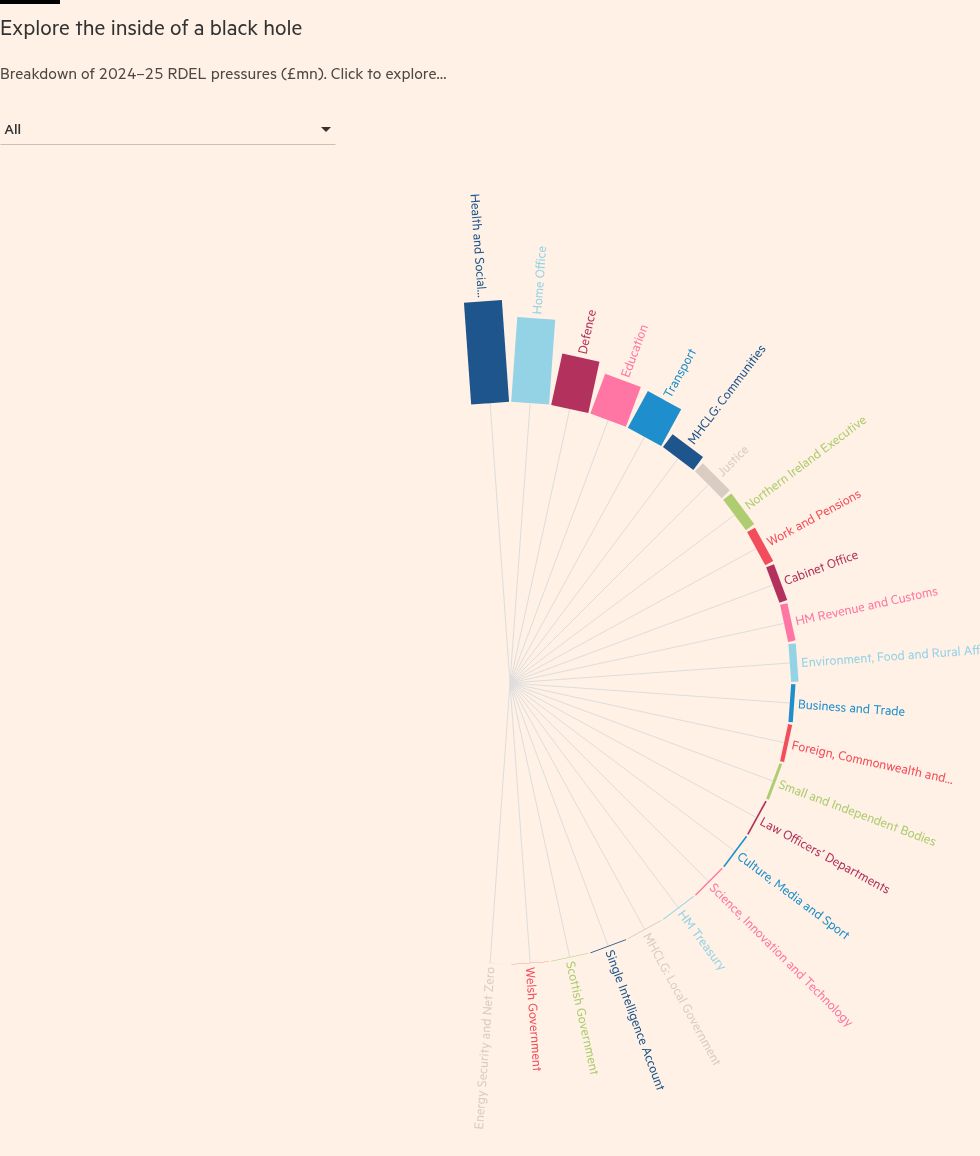
Unlock the Editor’s Digest for free
Roula Khalaf, Editor of the FT, selects her favourite stories in this weekly newsletter.
There’s a risk of overthinking things.
Yesterday, the Office for Budget Responsibility — the UK’s fiscal watchdog — published its “Review of the March 2024 forecast for departmental expenditure limits”.
The review was launched in the wake of July’s “Fixing the foundations” document, in which chancellor Rachel Reeves claimed to uncovered a “£22bn black hole” in the public finances.
This “black hole” — as Alphaville reported in July — was in fact a projected £21.9bn overspend (“pressure”) on day-to-day spending (Resource DEL, RDEL) by government departments during the 2024—25 fiscal year.

Moreover, this “black hole” — as Alphaville also reported in July — was in fact in large part the product of public sector pay decisions taken by Reeves herself, which represented £9.4bn of the pressures.

Finally, this “black hole” — as, yes you guessed it, Alphaville reported in July — also included a decent chunk of things that were effectively discretionary, in particular an unspecified number of items that had been shifted from Capital DEL (for capital spending) to RDEL.

So what have we learned as a result of the OBR’s review (19 pages), and HM Treasury’s associated release (40 pages)?
Not much.
The OBR report was always going a be a bit of a let-down, because it was framed as the search for a £22bn black hole that notionally existed in July, but was only looking at information given to the OBR in February. From MainFT’s write-up:
The watchdog said it would have dropped its assumption of a £2.9bn underspend in departments’ budgets for 2024-25 if it had known the full extent of pressures on ministries’ finances and the Treasury’s reserve fund.
OBR chair Richard Hughes added that the Treasury had known about net pressures of £9.5bn but not shared the figure with OBR officials before the last Conservative Budget in March this year.
The Treasury has told the OBR that it did not disclose such pressures because it assumed departments would find savings elsewhere to offset them.
A shocking discovery from this is that you’re more likely to encounter projected in-year overspends once you‘re actually in or near the year. And so Whitehall did, as the Treasury’s report describes but the OBR’s doesn’t.
The £9.5bn was £16.3bn by the time of the Spring Budget, and £21.9bn by the end of July:

No two black holes are alike, and while we will go to the effort of attempting to find out what assumptions were baked in in March . . . eh.
One mildly titillating element of all this was Reeves’ promise of a “line by line breakdown” of the black hole. Cool, data!
Unfortunately, the data is . . . pretty dull. Under “Normal Reserve claims” — which should probably be full of the most exciting stuff because it is basically raw overspend — the top “pressure” is £1.01bn to cover “Impacts of demographic change, demand and inflation” at the Department for Education. That could be literally anything.
In second place, providing — stunningly — even less information, is the Ministry of Defence overspending by £645mn on “Cost of operations”.
There’s a risk of overthinking things. Decisions were made, numbers were conjured, narratives were forged. It’s over now . . . right?

OK fine we did a stupid chart. With apologies to mobile users:

Further reading:
— The start of a new round of gilt market carnage?